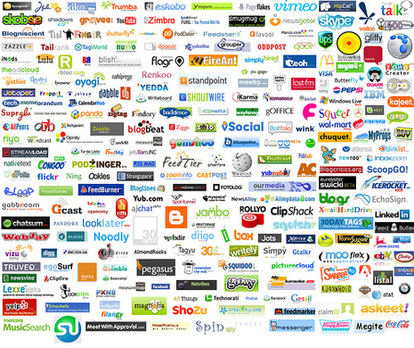
Within the context of education there are a number of possibilities for using social networking and media.
Arora (2013) explains that social media has increased the number of ways in which students can engage in the social component of learning. Arora (2013) also argues that using social media can help bridge connections between students and their education by eliminating the need to be physically present. I think this is a trend that will continue to grow as mobile devices become more and more popular. Students themselves are also accustomed to always being connected. Therefore, having access to their schoolwork is something that naturally follows. However, there are also some drawbacks of using social networking with students.
According to an online article, using social networking reduces learning and research capabilities, interferes with concentration, stunts communication and language skills and lowers motivation ("Negative Effects of Social Networking Sites for Students," 2012). Although some of the points raised may be valid, the arguments used to support them are unsubstantiated. For instance, it may be true that the development of language skills may be affected, but this is because of the nature of the content being presented. If students are asked the right kind of questions, and are given the adequate support and education then their writing can flourish. I think it is invalid to say that students' command over language is being diminished because of social networking sites-it is simply changing. Twenty years ago shorthand phrases, such as "lol" and "btw" were not being used. I think students are able to communicate more efficiently now, but are perhaps losing some of the depth and color language has to offer. When only 140 characters are available brevity is essential. This brings us to the use of Twitter within the classroom.
Twitter is a medium of online communication that offers quick and easy information. These websites offers different ways in which twitter can be used by teachers:
Twitter in the Classroom #1
Twitter in the Classroom #2
Some of the ideas on the websites include: posting cultural and educational events, having a student post an inspirational quote tweet each day, creating a Twitter scavenger hunt, and following Twitter accounts that describe the lives and personalities of historical figures. I think that using Twitter in creative ways can help engage students and get them more interested in course content. It will also show students that modern communications technology can be used in the classroom as well and contribute to their learning. Another way to pique student interest via social media is through video sharing.
Sites such as YouTube offer ways to interweave audio and video information with social media. Heick (2012) offers 10 ways to incorporate YouTube into the classroom (How to Youtube your Classroom). Some of the key terms he uses are: brevity, diversity, humor and passive consumption. I think if it is used with an educational frame of mind YouTube can be a very powerful tool. Personally, I try to include YouTube videos into my class whenever I can. New formats such as Videographics offer intriguing ways of presenting information, rather than traditional forms of instruction. Using YouTube in the classroom also shows students that there are numerous educational videos on the site. Making connections between YouTube channels and users also offers students a chance to comment on videos and directly communicate with producers. Even though there are some dangers associated with YouTube, if it is presented in a safe and educational way I think the benefits greatly outweigh the potential costs.
Overall, it is important to carefully select the social media platform that will enhancing learning. Although there are many benefits to using social media and networking it is also crucial to never overlook the safety and privacy of the students. Reinforcing the principles of digital citizenship and netiquette beforehand can alleviate many potential problems that made arise. Just as the list of social media sites continues to grow, so does the number of ways it can be successfully incorporated into the classroom.
References
Fig 1. logos1.jpg. http://www.socialmarketingcompany.com/wp-content/uploads/2010/01/logos1.jpg. Retrieved on July 10, 2013.
Arora, Keerti. (2013, April 9). Social Media in Education: Pros and Cons. Ed Tech Review. Retrieved from http://edtechreview.in/index.php/news/news/e-learning/268-socia-media-in-education-pros-cons
Crockett, Lee. 60 Inspiring Examples of Twitter in the Classroom. Retrieved from
http://fluency21.com/blog/2013/02/19/60-inspiring-examples-of-twitter-in-the-classroom/
Heick, Terry. (2012, July 14). How To YouTube Your Classroom. Retrieved from
http://www.teachthought.com/technology/how-to-youtube-your-classroom/
Miller, Samantha.. 50 Ways to Use Twitter in the Classroom. Retrieved from
http://www.teachhub.com/50-ways-use-twitter-classroom
Negative Effects of Social Networking Sites for Students (2012). Retrieved from
http://performancing.com/negative-effects-of-social-networking-sites-for-students/
Relevant Comments:
http://misspariseau.weebly.com/4/post/2013/07/social-media-in-the-classroom.html#comments
http://missraychert.weebly.com/1/post/2013/07/journal-entry-4-communication-part-3.html#comments
 RSS Feed
RSS Feed